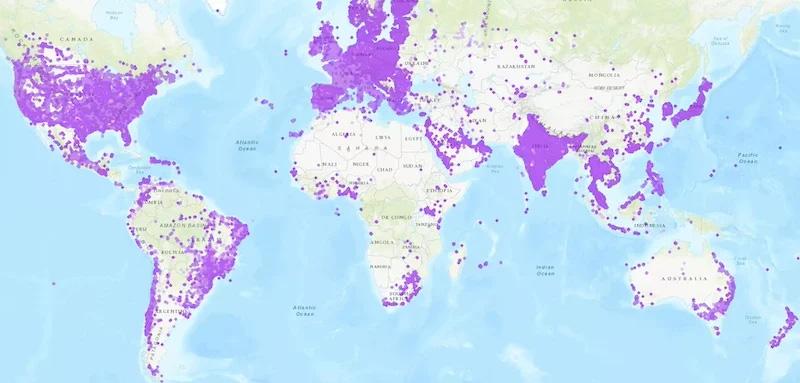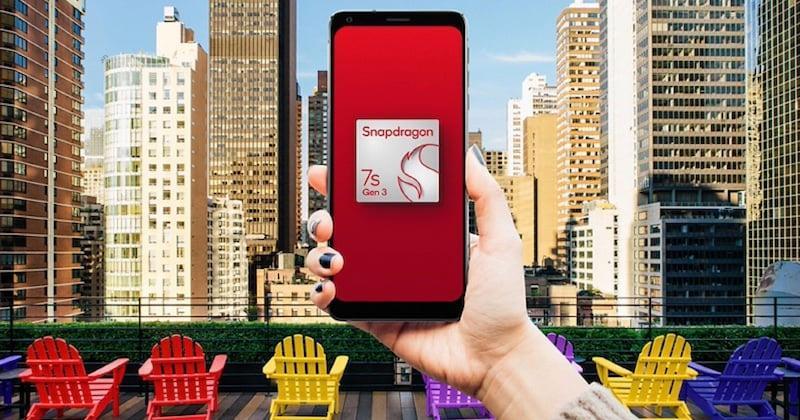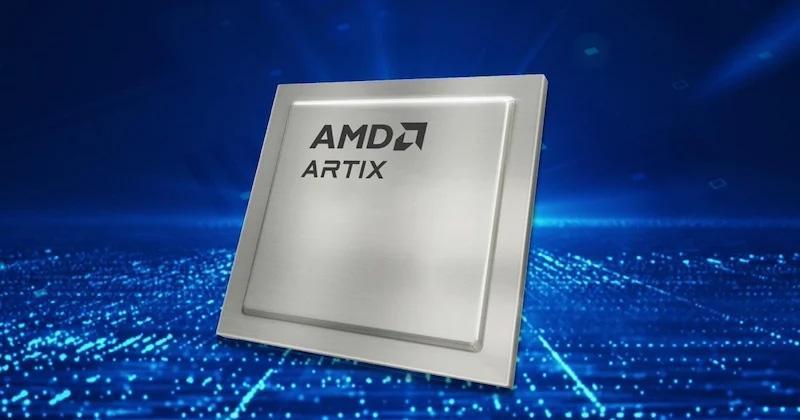Qualcomm Brings 5G and Long Battery Life to Billions of Smartphone Users
Qualcomm has upped the ante for low-cost phones with its new Snapdragon 4s Gen 2 platform. While Qualcomm continues to push top- and middle-tier smartphone performance, it is not leaving the low-end devices to other providers or to earlier-generation chips past their prime.

Snapdragon 4s Gen 2 platform. Image used courtesy of Qualcomm
With the Snapdragon 4s Gen 2, Qualcomm is delivering today’s feature sets and design improvements in a cost-conservative platform.
High-Performance Features
The Snapdragon 4s Gen 2's Kryo CPU is a 64-bit processor built on Qualcomm’s 4-nm process technology node. It has two performance cores running at up to 2 GHz and six efficiency cores at up to 1.8 GHz. The graphics system is built around the Qualcomm Adreno GPU and includes API support for OpenGL ES 3.2, OpenCL 2.0, and Vulkan 1.1. It includes hardware-accelerated H.265 and VP9 decoders
Kryo brings in features that previously were out of reach for low-cost phones. It utilizes UFS 3.1 memory, which offers faster data processing, app usage, and overall memory performance. UFS 3.1 is a relatively new Flash memory standard designed specifically around 5G. It can come in sizes up to a terabyte and utilizes smaller packaging along with faster speeds and power economy. One of the biggest performance enhancers in UFS 3.1 over the prior incarnation, UFS 3.0, is in write speed. 3.1 increases data write speed to up to 1,200 MB/second. That’s a 3x performance increase. LP-DDR4x RAM complements the UFI 3.1 Flash at up to 2,133 MHz.
The Snapdragon 4s Gen 2 platform (product brief linked) also increases camera performance. It includes the dual 12-bit image signal processor (ISP) Qualcomm Spectra. The Spectra enables simultaneous video, still capture, and up to 84-megapixel, single-shot capture. On the replay side, the processor supports FHD+ (2,220 x 1,080) pixel resolution at up to 90 frames per second.
The location subsystem supports dual-frequency GPS with NavIC L1+L5 for improved location accuracy and covers all of the major satellite systems, including GPS, GLONASS, BeiDou, Galileo, NavIC, and QZSS.
Gigabit 5G in Lower Cost Phones
Qualcomm estimates that 2.8 billion additional smartphone users will be able to afford 5G access with phones built around the new chip. 5G delivers up to one Gigabit per second download speed—seven times faster than the LTE phones the 4s Gen 2 will be replacing. 5G can also be employed in fixed installations, bringing high-speed broadband to homes and businesses with or without limited wired infrastructure. With the new chip, data services seamlessly switch from 5G to Wi-Fi 5 to enable redundancy and extended service conditions.

Worldwide 5G coverage. Map used courtesy of nPerf
5G service is available throughout the U.S., Europe, and all major population centers worldwide. However, the cost of the new high-end phones limits usage in many parts of the world. In the U.S., the average consumer smartphone cost $823 in 2023, a price that is predicted to keep increasing. Spending that much on a smartphone is simply not possible for billions of people. Economic Times India estimates that phones based on the new Qualcomm chip could debut in late 2024 for the equivalent of about $120 USD or less in India, the second largest smartphone market.
All-Day Battery Life
There was a time when higher performance meant shorter battery life. Today's phones, based on the new platform, will have an all-day battery life by balancing affordability, performance, and power usage. Further, the chip brings high-speed charging to low-end phones. The 4s Gen 2 brings 40-W fast charging can charge 50% of a battery's capacity in just 15 minutes. Long battery life and fast charging are often critical capabilities in remote areas of the world due to limited access to AC power infrastructure.
Moving “Low-End” Up the Technology Ladder
Many of these features were the exclusive parlance of high-end phones just a few years ago, and some, like the 40 W charger, are top-performing today. By bringing this capability in an economical package, Qualcomm is potentially helping billions of people keep up with the technology needs and entertainment wants that come in today’s digital world. Xiaomi, headquartered in Beijing, China, is expected to be the first smartphone developer to deliver low-cost phones based on the Snapdragon 4s Gen 2 in late 2024.




